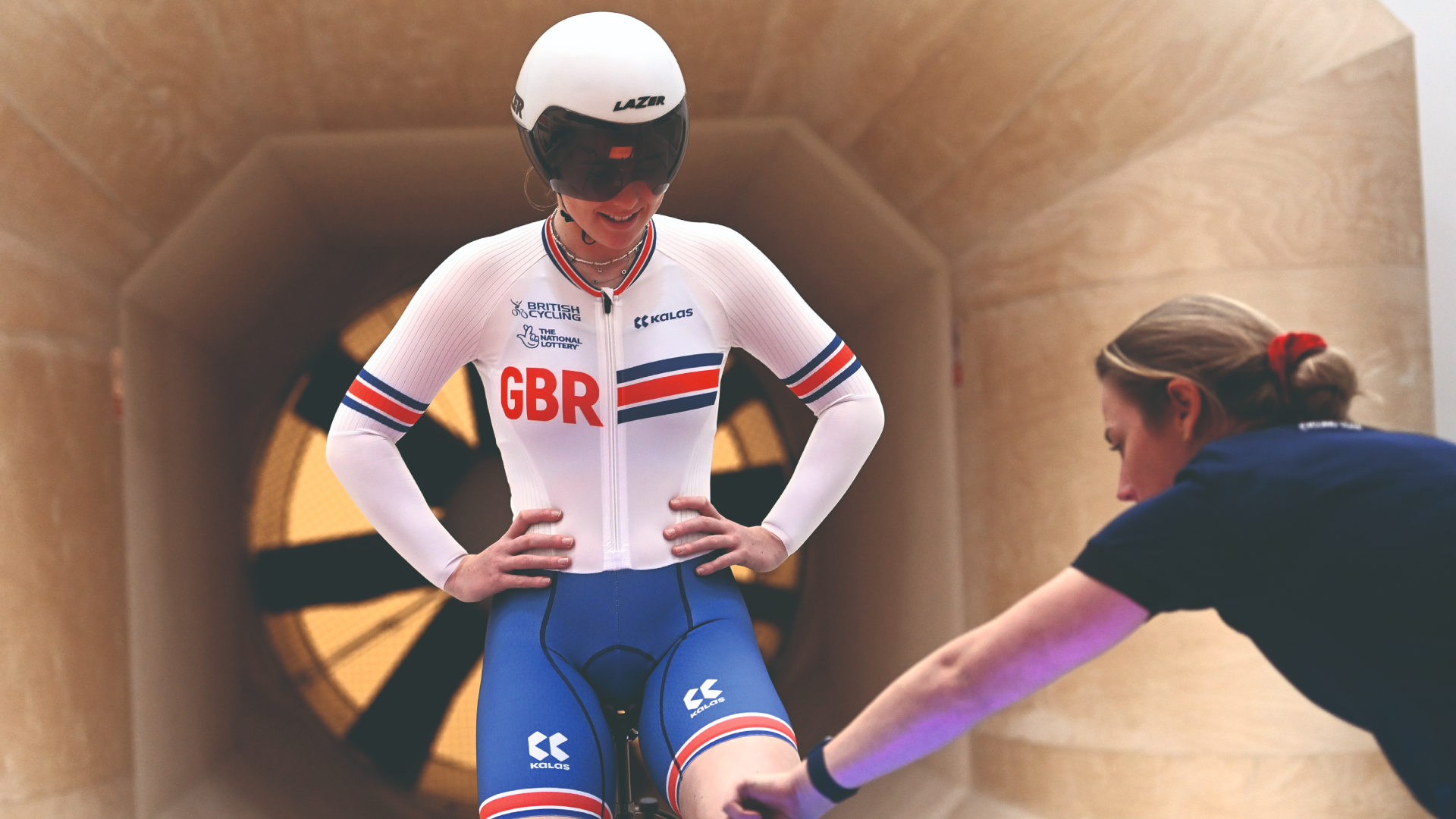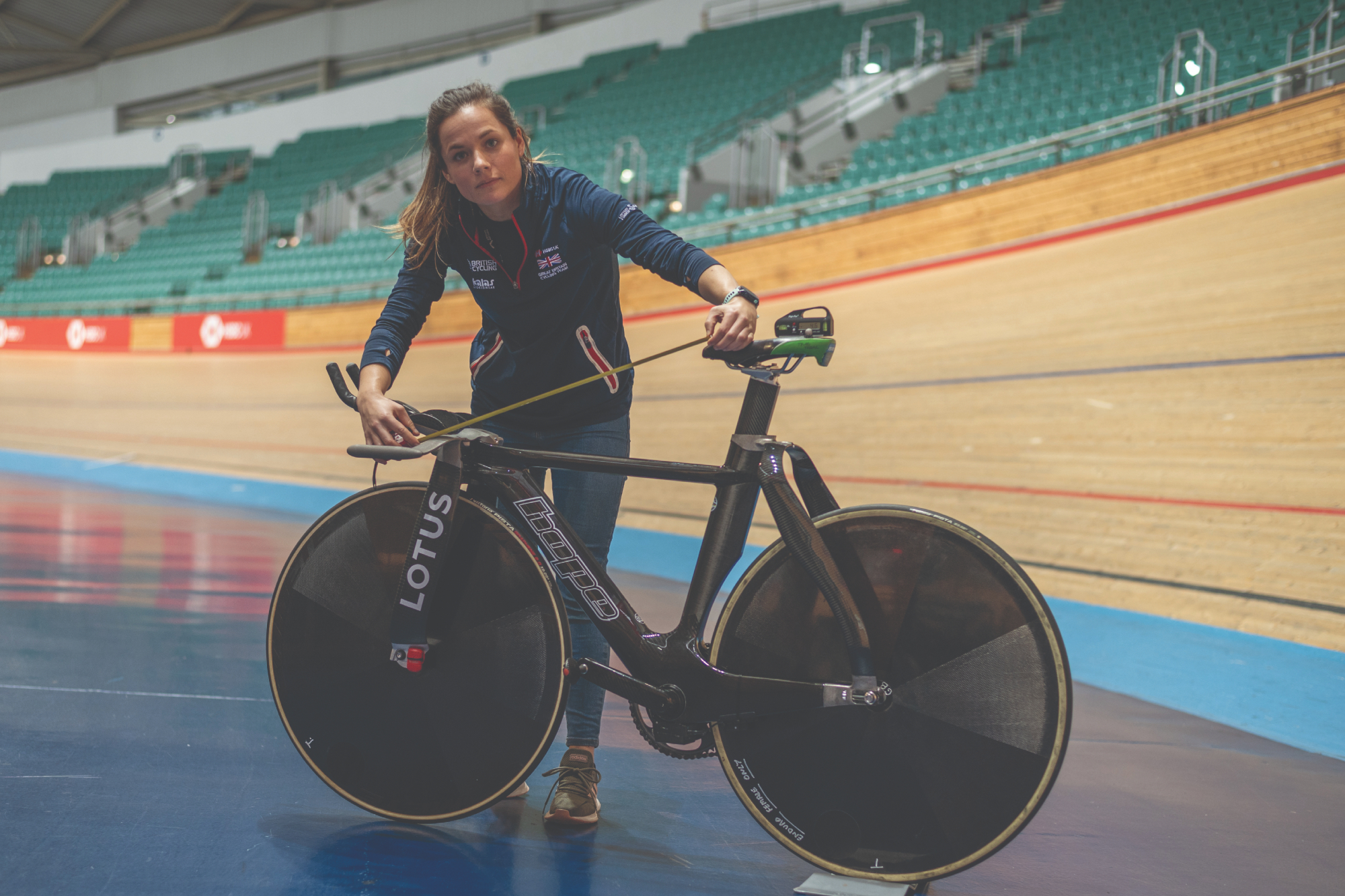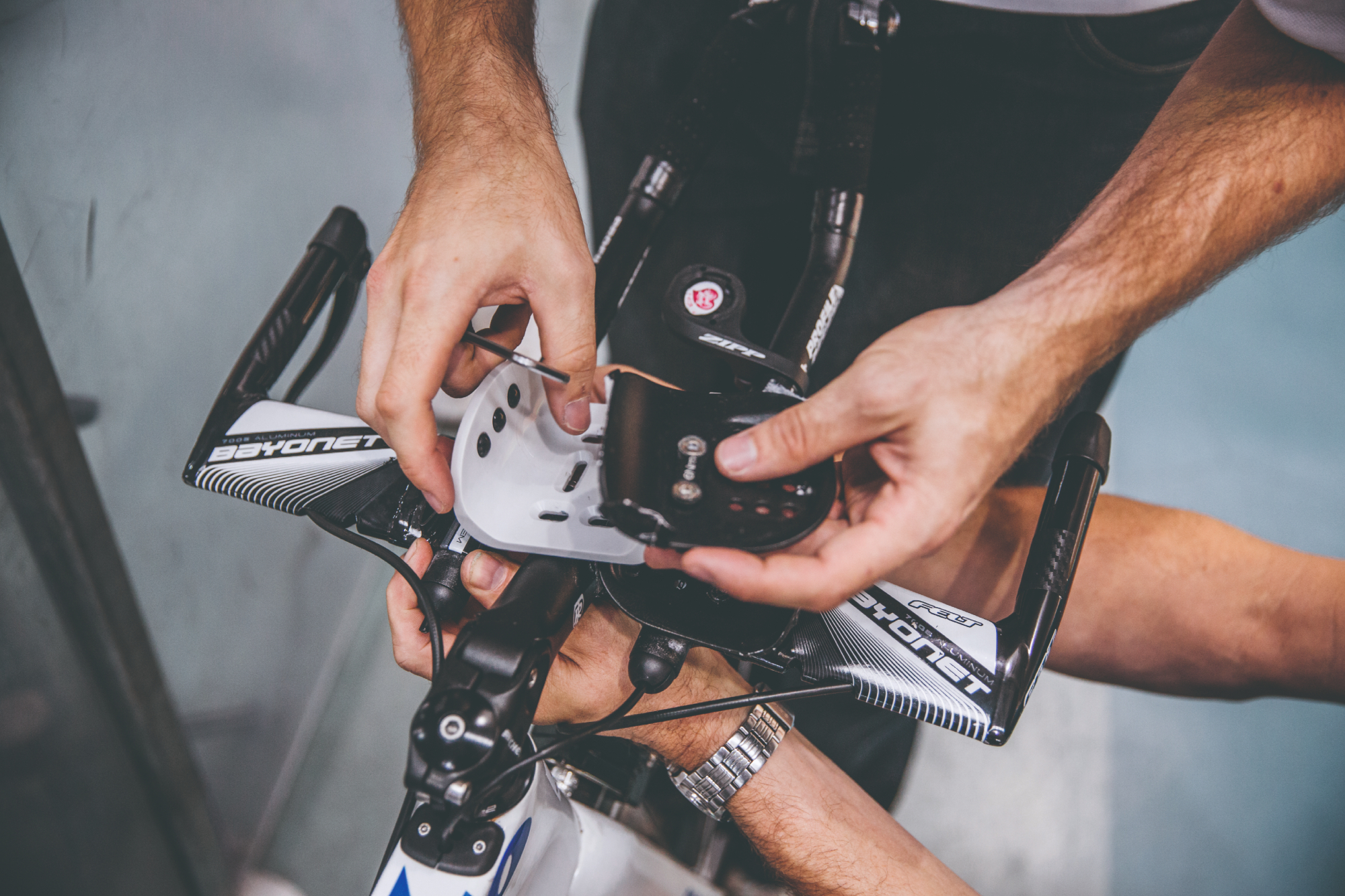'My psychologist and physio are the two most important people in my career' - Team GB's six pillars of performance support and what amateurs can take from this
For the pros, peak performance is underpinned by an elaborate support structure. Josephine Perry considers how amateurs can pick and choose the key buttresses


Let’s assume you are already training as hard and as often as you possibly can given your ability and available time. What else can you do to support your performance and become a better cyclist? First and foremost, you could upgrade your bike and hire a coach – the two quickest and easiest options. Provided you have a healthy bank balance, a well-qualified coach and a speedy steed are just a few clicks away. But in doing so, would you be focusing on the right things and getting maximum bang for your buck?
Josie Knight, current world champion in the team pursuit, is clear where her priorities would lie. “I always joke that my psychologist and physio are the two most important people in my career. You can train as hard as you can every day and maybe add a couple of watts, but there is so much more to work on with your position, your mental approach and making your body physically able to do it all.” Knight credits her physio Katie Flatters for keeping her injury free and her psychologist Rich Hampson for keeping her head healthy.
As a member of the GB Cycling Team, Knight has six pillars of performance support available to her. Who would you want on your team to get you reaching your potential? And how can you create your own DIY versions of the six pillars?
1. Positional optimization

PRO PREP: Having biomechanist Deborah Newton and aerodynamicist Chris Hebert on your side, and a wind tunnel and biomechanics lab available to use whenever you need them, is a privileged place to be. In the last year, 121 members of the GB team have had positional sessions on either track, tandem, road and trike bikes, and there have been 27 equipment development sessions. One of these athletes was first year elite rider Josh Tarling, who made a big splash when he took bronze in the 2023 World Championships time trial and won the European Champs TT.
REALITY CHECK: Newton and Herbert’s goal is to optimize a rider’s position so drag is reduced and power output maximised. They acknowledge that, for hard-training pros, power gains are hard to come by, so if they want to go faster, they need lower drag by being as aerodynamic as possible. Does this apply to amateurs? “Yes, an amateur rider who’s never done any work around their aerodynamics,” Newton says, “could see up to a 10% increase in speed if they focus on position and equipment post-session.”
Kate Allen, 39, is the current national 10-mile, 25- mile, team and circuit TT champion and has been in a wind tunnel four times since 2016. “It is super-efficient at giving you tangible metrics and data,” she says. Her last tunnel session saw her change her helmet, suit and extension poles and she’s now using prototype Drag2Zero poles, which help her stay comfortable while lower and aggressive for longer. But the element she says is most important is training yourself to hold the position. Allen does weekly aero drills and has six monthly bike fits to get continually more aggressive, lower and narrow.
OFF YOUR OWN BACK: If, like most of us, £1,000 wind tunnel sessions are out of your budget, Newton suggests five ways to get more aerodynamic.
The latest race content, interviews, features, reviews and expert buying guides, direct to your inbox!

Cutting drag can be as simple as switching to narrower bars
Firstly, ask a friend to take photographs of your positioning or set up a mirror beside your turbo so you can see what it feels like versus what it looks like. Then make changes slowly so you gradually adapt. “It’s not just about getting into the best position, it’s about being able to hold it too.” Newton reiterates that the biggest determinant of aero performance is not the bike or equipment but your position, so flexibility and mobility are critical. “Then test and evaluate any kit you buy, as aerodynamic kit – skinsuits, helmets, bars – performs differently on different athletes.” Finally, if you want to upgrade one piece of equipment, Newton recommends using narrower bars. “The standard is around 42cm; our track riders use nothing wider than 33cm.”
2. Physical preparation
PRO PREP: The lab and field-based physiology assessments that GB riders get from physiologist Dr Briar Rudsits are used to monitor changes in aerobic and anaerobic capacities, powercadence and torque-cadence relationships.
REALITY CHECK: A smart indoor trainer can give you the basic testing you need to set training goals and understand your strengths and weaknesses. It isn’t really access to the tech that is the limiting factor for amateurs, says Paul Mullan, head of performance support, it is that you need someone who can translate all of the principles into applied coaching advice. “A good physiologist will make it sound super-simple.”
OFF YOUR OWN BACK: Rudsits says your first action is going to be to take an FTP or Critical Power test on the turbo, cautioning that “subsequent training is 95% of the winning formula.” This means that, rather than investing in lots of testing, your main focus should be on sleep, nutrition and recovery strategies so you can train consistently.
3. Nutrition

PRO PREP: GB riders get one-to-one consultations, squad workshops, cooking sessions and online digital support from performance nutritionist Sam Impey, who keeps a close eye on what fuelling brings to bear training responses. “We want to identify where there are opportunities for the riders to optimize their nutrition for cycling and maximize adaptations from training,” says Impey.
REALITY CHECK: Finding a nutritionist who will interact with your other advisers is rare, but you can definitely analyse the key data by using apps such as MyFitnessPal. This can help you track your food and get an idea of which macro and micro nutrients you might be low on to help you adapt and improve bit by bit – provided you don’t get too caught up on the numbers.
OFF YOUR OWN BACK: Impey stresses that there are three nutrition basics that make a big difference: eating five to seven portions of fruit and veg per day, taking protein regularly throughout the day, and more carbs during rides.
4. Data and insight

Data collection and analysis is no longer the preserve of the pros
PRO PREP: Performance analyst Sophie Ball collects GB team data and offers insights to riders on where and how to improve. On the track, this work happens every single session. Knight says this makes all the difference. “When you are talking about winning or losing by 0.2 of a second, having video analysis changes the game so you can see where you went wrong but also where you went right.”
The analysis helps the team to build a story about the rider’s current form, where they need or want to get to and how to get there, even on race day. In road racing, however, international team (as opposed to trade team) races don’t allow radios, so all the analysis needs to be done in advance, with most in-race decisions left to riders.
REALITY CHECK: Training with an iPad recording your every move might well help you make regular tweaks but it might also suck the joy and mental health benefits out of your riding. While the pros need to focus on the tiny elements, amateurs need a long-term, zoomed out picture. You’re therefore better off limiting your data scrutiny to monthly or periodised trends and overviews.
OFF YOUR OWN BACK: Rudsits says there is a lot of easily accessible data that amateurs can use to do their own analysis, tracking external outputs like speed or power against internal outputs like heart rate or perceived exertion. To use these tools to monitor progress, you need to regularly repeat your efforts in a controlled environment, using a common route, climb, or section of road to test yourself and collect speed, power, heart rate and perceived exertion data. If you don’t have a power meter, regularly test yourself on a smart-trainer, making the most of platforms like TrainingPeaks to record and analyze your data.
5. Mind and lifestyle
PRO PREP: Performance lifestyle practitioners and sports psychologists support the person as well as the performer, helping them develop both on and off the bike. Amy Tipping is the performance lifestyle practitioner who helped Josie Knight to consider undertaking education alongside her racing. As a result, she has just started a diploma in garden design.
Rider psychology is tailored to make the process of racing as stress free as possible. “Before I was on the programme, I would hear about riders seeing psychologists and I remember naively thinking ‘what is wrong with all these athletes’,” admits Knight. “But I don’t go and see Rich because I have issues but because it can add so much without me even realising – usually by giving me processes and plans to rely on for race day.”
REALITY CHECK: Most of us would be benched for a couple of months after a major crash, but pro riders have to return to racing as soon as safely possible.
Psychological support helped BMX rider Declan Brooks, 27, process the fallout after he was knocked unconscious during a double backflip in the World Championships freestyle competition. It was just eight weeks before the Tokyo Olympics and he needed not just to get back to riding but to executing tricks without fear. The psych team helped him recover, get back out doing the double backflip and assisted with final event preparations. It worked – he brought home a bronze medal.
OFF YOUR OWN BACK: You are unlikely to have someone offering daily check-ins but you can do daily self-reflection. Tipping’s advice is to look at the priorities in your life and work to understand where cycling fits in: “Consider how it complements your overall well-being, physical or mental health.” Chris Beaumont, on the psych team, urges amateurs to reflect on their goals, strengths and distractions. “Knowing the warning signs that you’re struggling will allow you to put actions in place that direct you to those overall cycling goals.”
6. Health and well-being
PRO PREP: Who wouldn’t love a medical team on hand for reassurance when a niggle or knot rears its ugly head? Dr Nigel Jones is Team GB’s chief medical officer, the man who puts this in place by making sure doctors, physios and soigneurs are on hand to help riders handle illness, injury and injury prevention. As part of the injury prevention package, GB riders have cardiac screening every two years, mental well-being screening every six months, and quarterly blood tests.
In addition, wellness data is collected daily so any issues are spotted early and training can be modified.
REALITY CHECK: While your GP won’t be as accessible as Jones’s team, you can collate your medical data and learn to understand it. You can get regular blood checks through companies such as Forth Edge and Medichecks, and many smart-watches collect wellness data. Add in a physio who knows you well and can be your go-to person when something doesn’t feel right.
OFF YOUR OWN BACK: Jones gives three top tips for looking after your health as a rider: firstly, “monitor your resting heart rate. If it’s more than 10% above normal upon waking, think about decreasing the intensity of any planned session.” Secondly, don’t train tired: “It stresses your immune system and increases your risk of illness and injury.” And finally, never train through illness or injury: “You risk turning a minor problem into a major one,” concludes Jones.
Pick your pillars
As an amateur rider, your level of performance support will never match that of the pros. Instead, you need to figure out the outcome you most want to achieve and then identify which of these evidence-based pillars of performance support could best help you achieve it. You don’t have to go all-in or invest large sums of money. Baby steps and gradual tweaks will allow you to see whether you are moving in the right direction and help guide further experimentation.
How clever tech might take over performance support
A recent keynote speech from Sian Allen, research manager at Lululemon, highlighted three new tech tools to keep an eye out for…
Real-time data: Visuals being flashed up on screens about an athlete’s data while they are racing and for analysis by media afterwards. This is already happening to some extent but is growing.
Colour-change tattoos: The idea here is that the tattoos would tell you key physiological analytics as you are riding.
Brain-reading earphones: An innovative type of Airpod aims to incorporate electroencephalogram (EEG) tech to measure how our brains are behaving as we ride.
Dr Josephine Perry is a Chartered Sport and Exercise Psychologist whose purpose is to help people discover the metrics which matter most to them so they are able to accomplish more than they had previously believed possible. She integrates expertise in sport psychology and communications to support athletes, stage performers and business leaders to develop the approaches, mental skills and strategies which will help them achieve their ambitions. Josephine has written five books including Performing Under Pressure, The 10 Pillars of Success and I Can: The Teenage Athlete’s Guide to Mental Fitness. For Cycling Weekly she tends to write about the psychological side of training and racing and how to manage mental health issues which may prevent brilliant performance. At last count she owned eight bikes and so is a passionate advocate of the idea that the ideal number of bikes to own is N+1.
